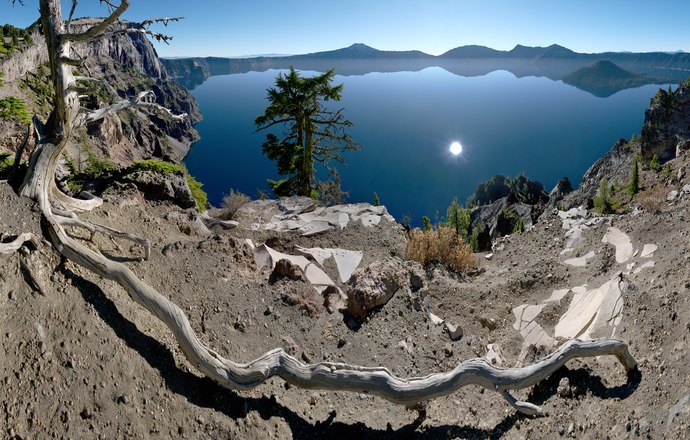Seven thousand, seven hundred years ago, southwestern Oregon’s 11,000-foot Mt. Mazama erupted. Legends from the Klamath people carry first-hand accounts of the collapse of the mountain, laying waste to much of the surrounding area, depositing a deep layer of volcanic ash and, in its aftermath, creating within its volcanic caldera a 2000-foot-deep lake of pristine clarity. In this early morning of late fall, the low morning sun reflects off the clear, calm lake. Sitting on the crater’s rim a thousand feet above the lake, a dead Whitebark Pine rests precariously atop a volcanic rock ledge with its extended and exposed root providing balance. This endangered species formerly thrived at high altitudes such as the sub-arctic climate of Crater Lake’s 7,000-foot elevation, and in fact is the highest altitude pine of the Cascade Mountain Range. Though, like other victims of its species, through invasive attacks by pine bark beetles, circulation of nutrients was disrupted, and the insects’ boreholes introduced a deadly pathogenic fungus to this tree leaving only its skeleton.
- James Baker

